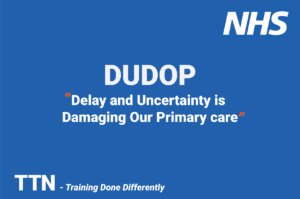Here we go again.
What goes around, comes around.
Deja vu. Ground Hog day. Experiences from a past life. Call it what you like.
The NHS is having another go at cracking the Holy-Grail of procurement… symbolised by the humble bog-roll.
The NHS buys a lot of bog rolls. How many? Who knows… but a lot.
Here’s the tale of the bog-roll;
NHSD… no not Digital, the National Health Shopping Department, buys all the bog rolls for a hundred quid. They are delivered to the Normanton warehouse. At the distribution centre an activity takes place called, ‘breaking-bulk’.
The bog rolls are broken down into smaller lots, ready for delivery to every nook-and-cranny of the NHS, where there’s a loo. That translates into about 17,500 locations.
They range from huge hosptials with custom designed bays, tailored for just-in-time deliveries, to GP practices, marooned in the high street behind yellow lines and clinics surrounded by unsympathetic traffic wardens.
For comparison, Tesco have under 2,000 shops, almost all, with delivery bays.
The logistics exercise, handling and delivering, adds an on-cost to the bog rolls.
The NHS is traditionally coy, but some say the on-cost might be as high as 11%.
If that is correct, it wouldn’t be unreasonable, given the problems with delivery and the cost of breaking-bulk.
Tesco… it’s claimed to be under 5%. Marks and Sparks say it is lower.
So it is… the £100 bog-roll becomes £111.
Enter the wicked bog-roll supplier.
They ring the practice, or the hospital and whisper, how much are you paying for bog-rolls?
£111, comes the reply.
‘Oh’, says the supplier, ‘we will deliver them to you, direct, for £105.’
‘Done’, says the Trust… and so they have been, along with the taxpayer.
There-in the problem… and why, for so many customers, much of what the NHS uses, in the day-to-day-doing… it’s cheaper to send someone down to Cost-Co to buy the bog rolls, the stationery shop for the A4 and the local farm shop for the spuds.
The procurement people call it spot-buying and it undermines national deals.
Here’s the thing… Trusts are independent and have a fiduciary duty to make the best use of taxpayers money and GP practices have to think about their back pocket.
There’s no way to stop spot-buying.
Add to that…
- up-coming price hikes because of inflation
- increases in on-cost because of diesel prices
- plus the cost of going green…
…and if you’re a hospital or a GP, you’re looking at trying to trim at least 9%, or more, from your shopping list.
There is a long list of nationally contracted products and it is a conundrum.
The design of the majority of NHS buildings doesn’t help. A 48hrs turn-around, on most orders, is heroic and the vital and specialist nature of so much of what the NHS does, makes procurement one of the most complicated arrangements in Europe.
There was a time when the NHS came close to a solution.
Hospitals and others, got together and set up regional procurement hubs. They were partners in ownership so, operating costs were shared and surpluses divided up at the year end.
The Hubs were big enough to benefit from scale and small enough to get a grip on the on-costs. They were popular and worked well.
Like everything else that was sensible, Andrew Lansley smashed them up in his bonkers reforms.
Since then the world and his wife have tried to improve procurement.
Lord Carter had a brave go at cutting costs but it turned into a bureaucracy-fest. DHL and Supply Chain Coordination Limited, had a go. Chipped in and chipped away at prices…
… but the uncomfortable truth, a basket of NHS staples can, probably, still be bought, cheaper, locally.
There’s only one way to cut procurement. Cap costs to a percentage of Trust’s turnover and reduce it every year…
… but I doubt we have the data, or the guts to do that.
Enter Jacqui Rock, the new boss of the new ‘central commercial function’ who tells us she is going to ‘put all the procurement functions in one place’… but… ‘will not make it mandatory for local procurement and commercial teams to buy through specified routes…’
… that’s because she can’t.Good luck with the bog-rolls.
News and Comment from Roy Lilley
Contact Roy – please use this e-address roy.lilley@nhsmanagers.net
Reproduced at thetrainingnet.com by kind permission of Roy Lilley.








